In a few weeks, spring will formally begin here in the forest but many species of plants and animals have gotten a head start on this season.
The landscape is beginning to show a more intense green and in some areas, there are flowering shrubs. Of course, this leads to more movement of certain insects such as butterflies and bees. The forest is moving gentlemen! There is more activity in this ecosystem.
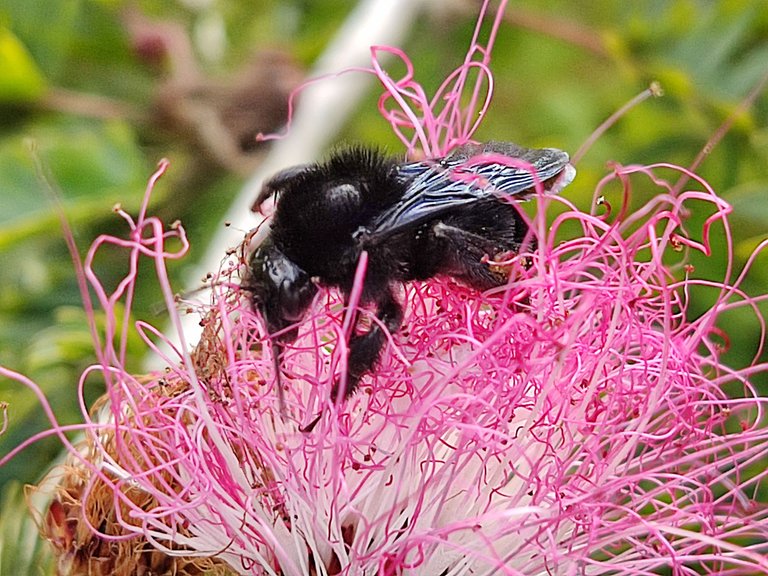
There is an area in the forest where shrubs predominate instead of trees. They are shrubs that throughout the year maintain the green foliage of their leaves as in the case of Calliandra parvifolia. This shrub grows very well in open spaces. It is a shrub that needs a lot of space around it because its branches grow laterally, as if they were extensive arms.

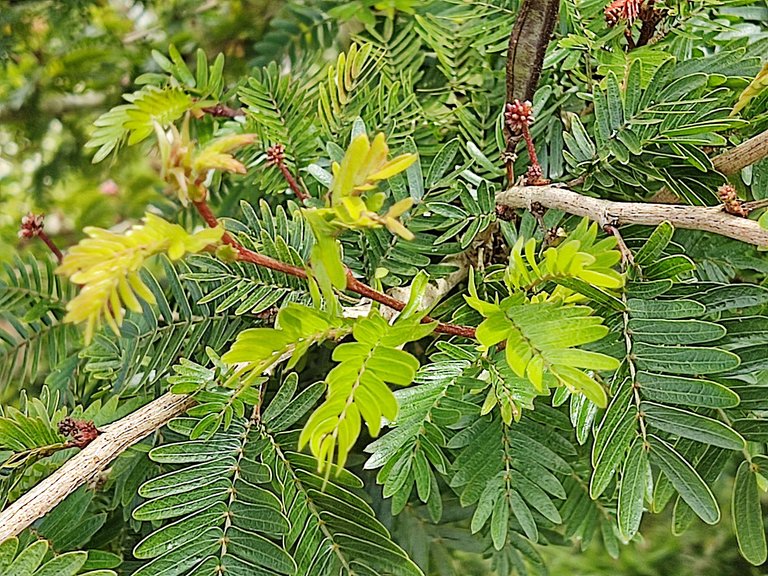
A couple of weeks ago, I saw on several of the branches of Calliandra parvifolia bushes flower stalks emerging. In the blink of an eye, a beautiful purple color began to stand out among the bushes. I confess that I love the flowers of Calliandra parvifolia for their appearance and light texture. They look like purple filaments suspended in the wind.
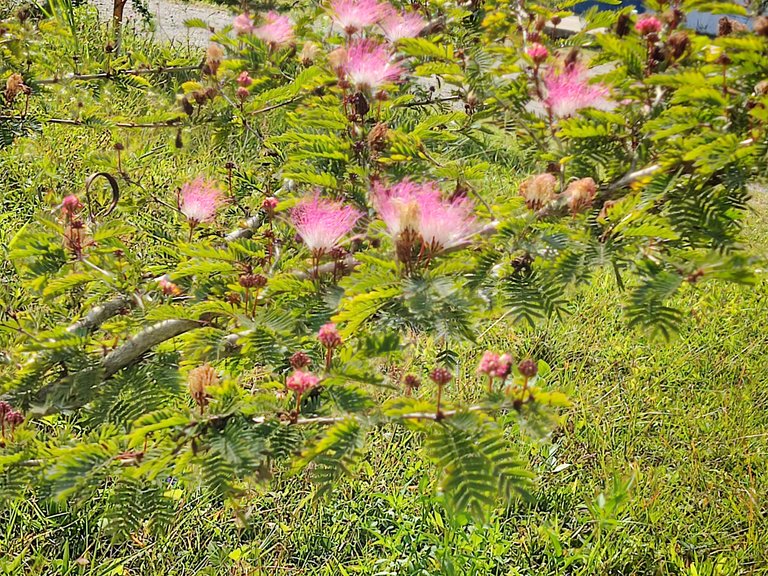

of Calliandra parvifolia occurs?
In nature there are processes that are slow and others that are faster. The flowering process of Calliandra parvifolia occurs in a couple of weeks. Below is a sequence of pics so you can see the process in detail.
The first sign that flowering is about to start is to observe small clusters of flower buds on some branches. These clusters are curiously shaped and from the distance, look like wild blackberries.

As the days go by, these small clusters turn to a lighter color, and from each one of them, a spice of fuchsia threads starts to emerge.
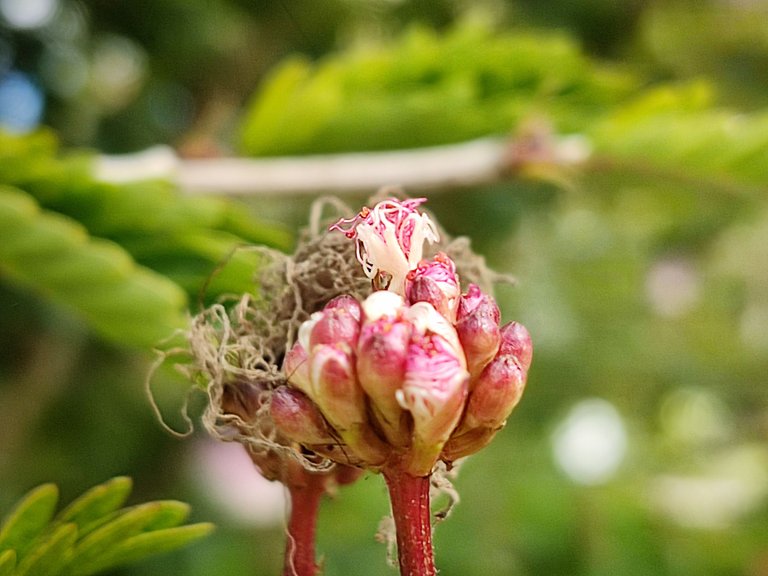

When all the flower buds are fully open, it looks like a skein of fuchsia-colored threads wound together. But don't be fooled. These threads are not the flower. These structures are the multiple stamens that protect the delicate flower that is about to emerge.
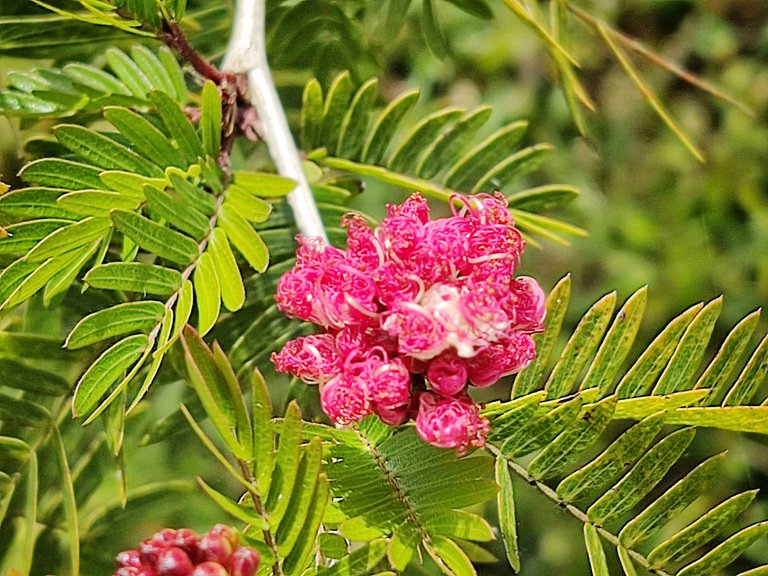
If you look closely at this pic, there is a kind of thin white sheet surrounding a group of purple stamens. Well, that white structure is the flower of the Calliandra parvifolia shrub. You will see this flower in more detail later.
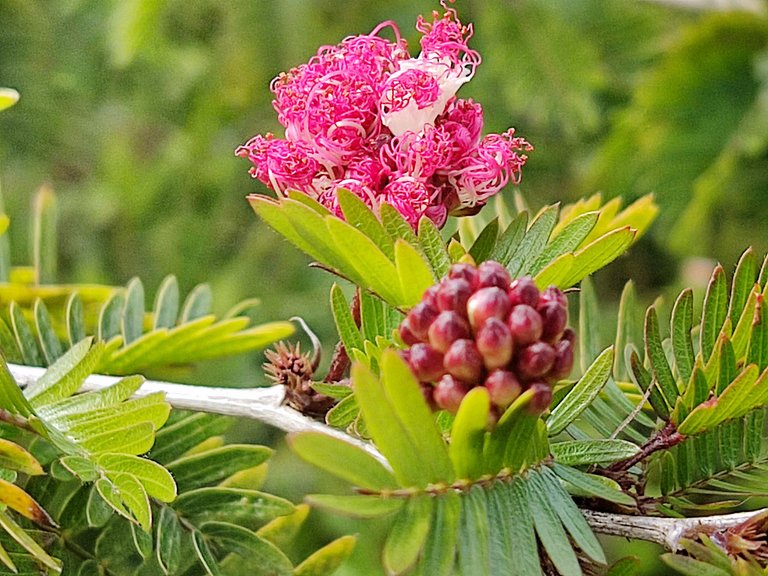
Finally, the flowering process ends when all the stamens are unrolled, leaving a kind of tousled duster clean. It is not for nothing that this shrub is named, in some parts of South America where it is native (Paraguay, Uruguay, Argentina, Brazil), as pink little duster clean.
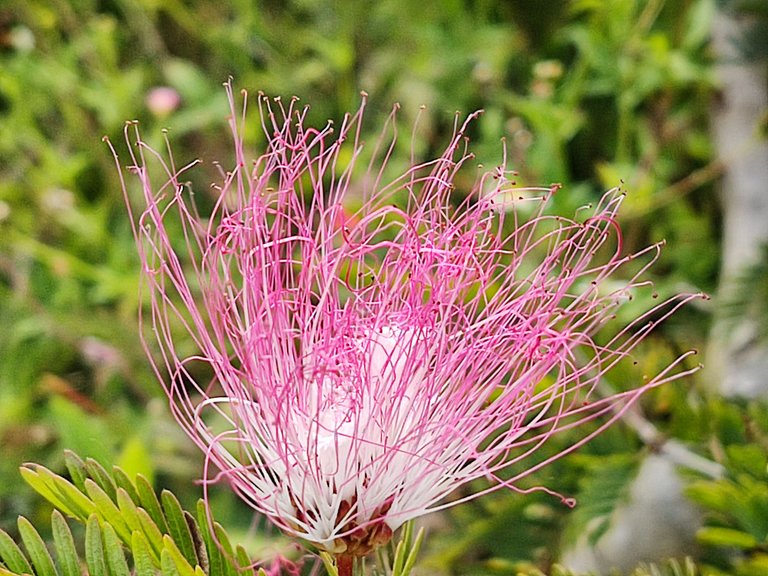
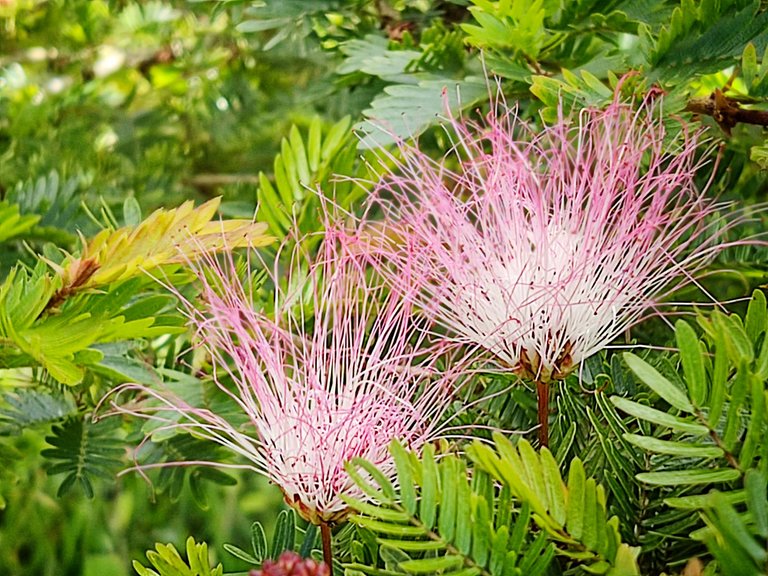
When all the stamens are unrolled, you can see them are white at the base and fuchsia at the top.
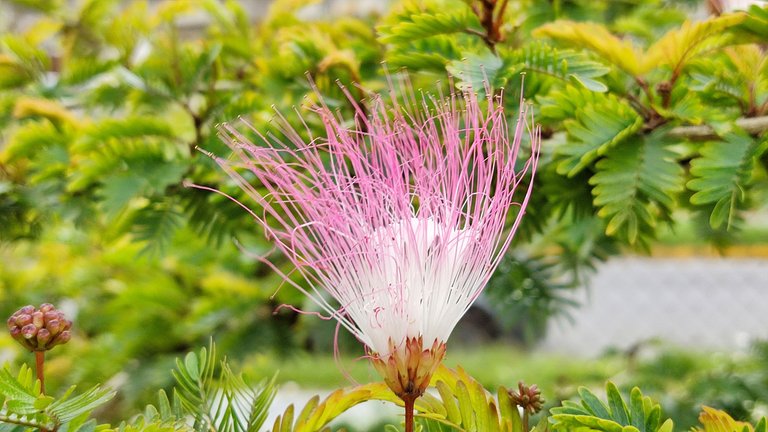
If you get close enough to the center of these tousled filaments you can see its delicate flower. The flowers of Calliandra parvifolia are white bell-shaped with jagged edges and laden with lots of nectar.
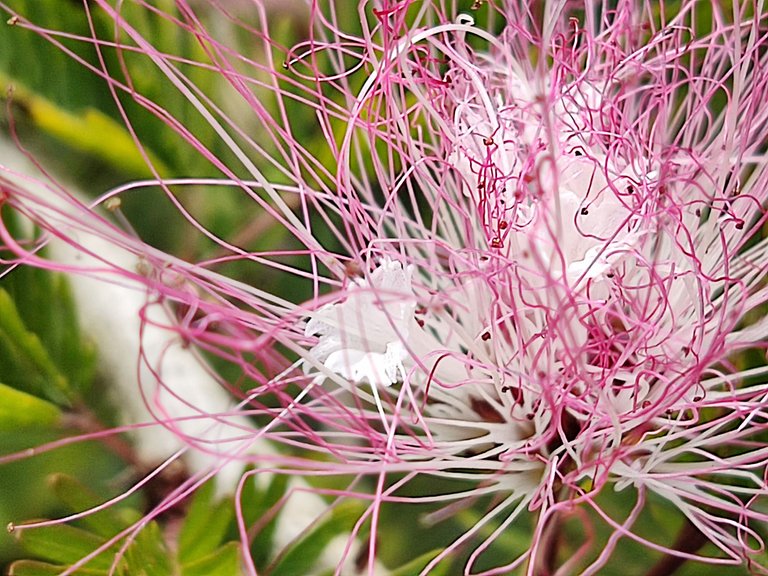
How did I know about the nectar? So, while I was taking the pics, a large blue bumblebee (Xylocopa violacea) appeared.
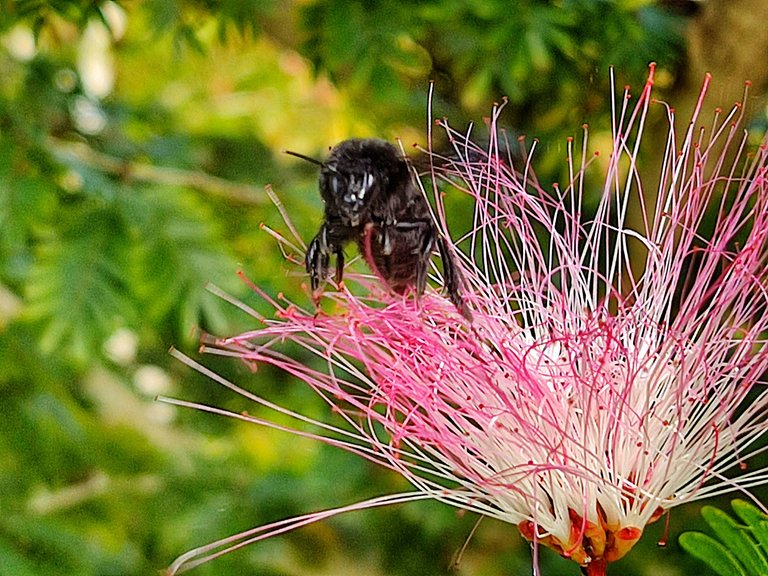
As soon as this bumblebee appeared, it dived all over the flowers of this bush.
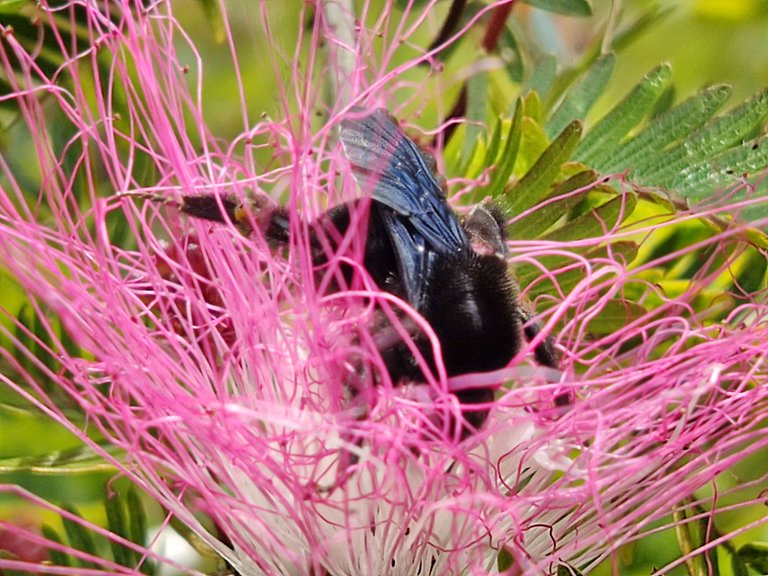
At times this insect remained motionless and stuck to the flowers. I even thought it might have passed out from a sugar rush from drinking so much nectar 😂.
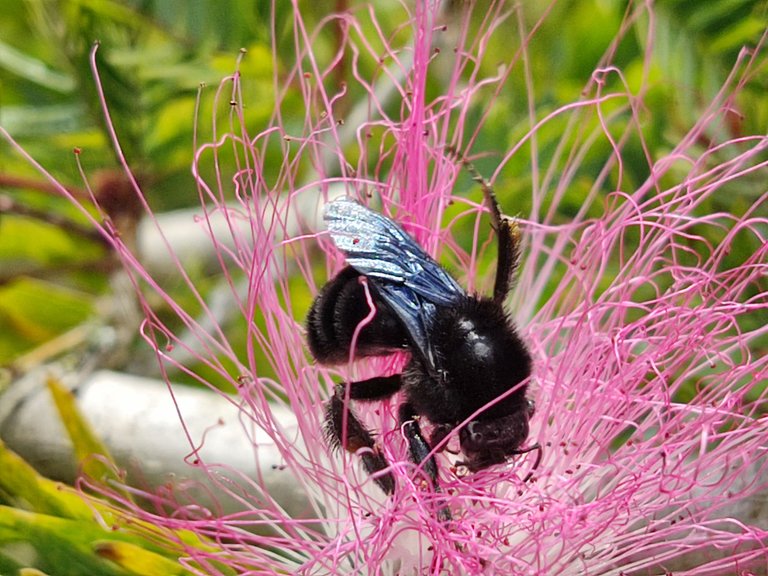

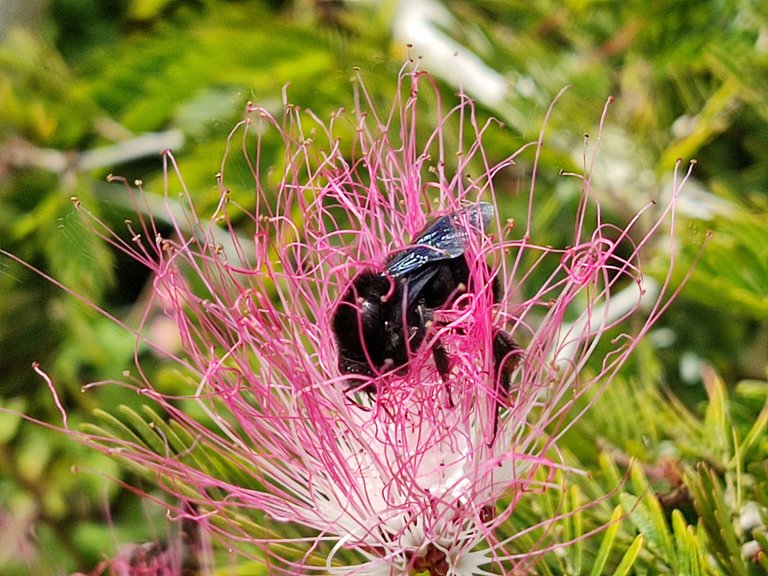
I think the bumblebee sensed my concern and suddenly raised its head and stared at me as if to say: easy baby, I'm fine, but don't you dare interrupt my lunch! 😂

And without further ado, this bumblebee flew to the adjacent flowers to continue tasting its delicious nectar.
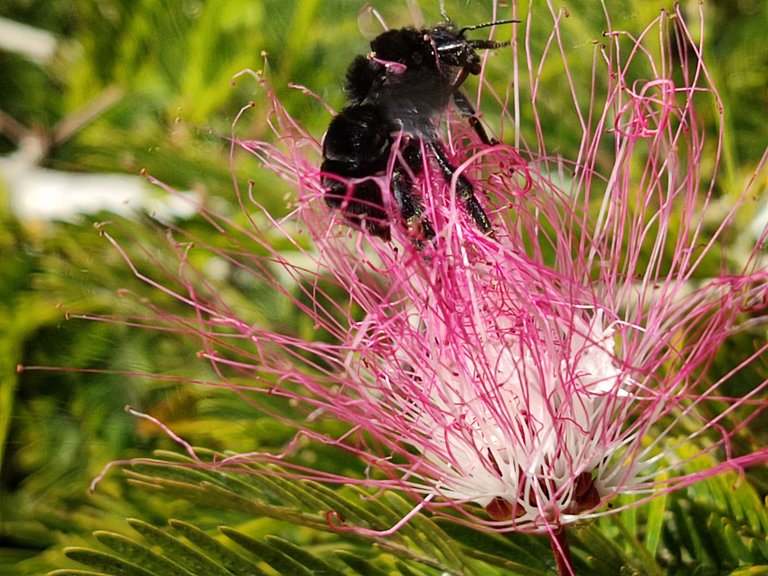
Something that gave me a lot of fun was the way this bumblebee climbed through the messy stamens. You could see how it was pushing them aside with its legs to get to the much-desired nectar.
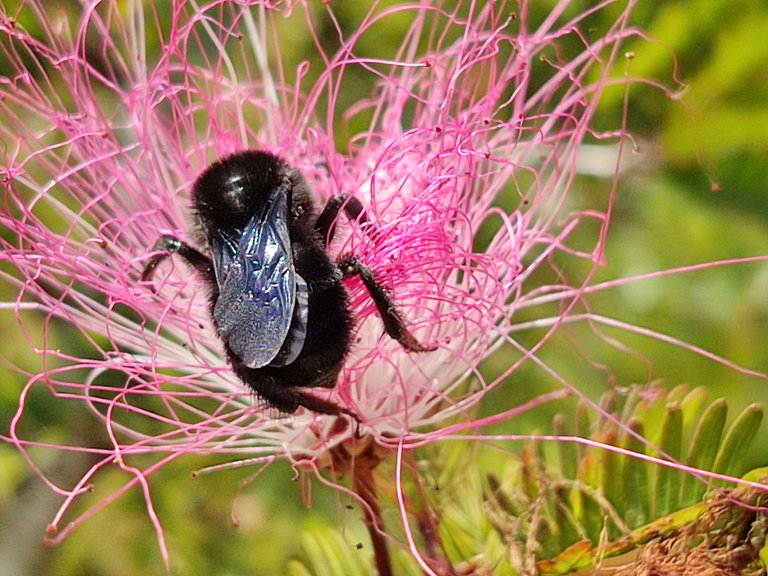
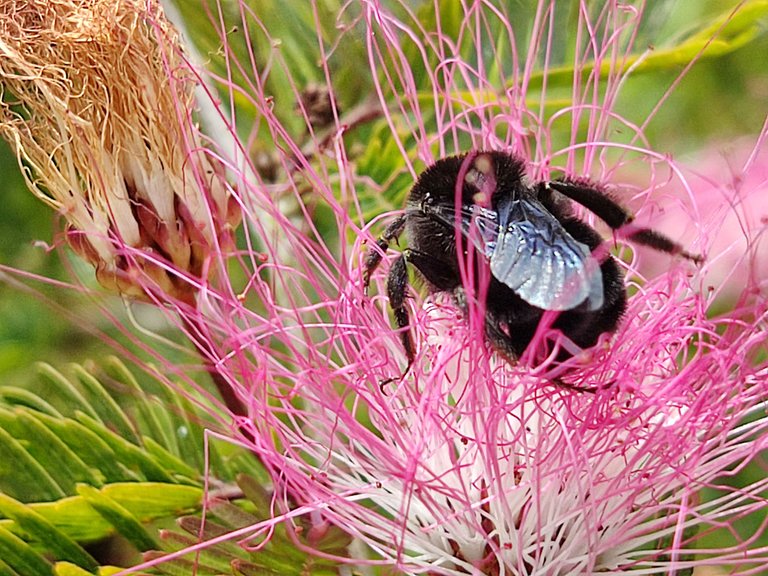
From its voracious way of eating, I would venture to say it was a male bumblebee. He was very greedy 😂!
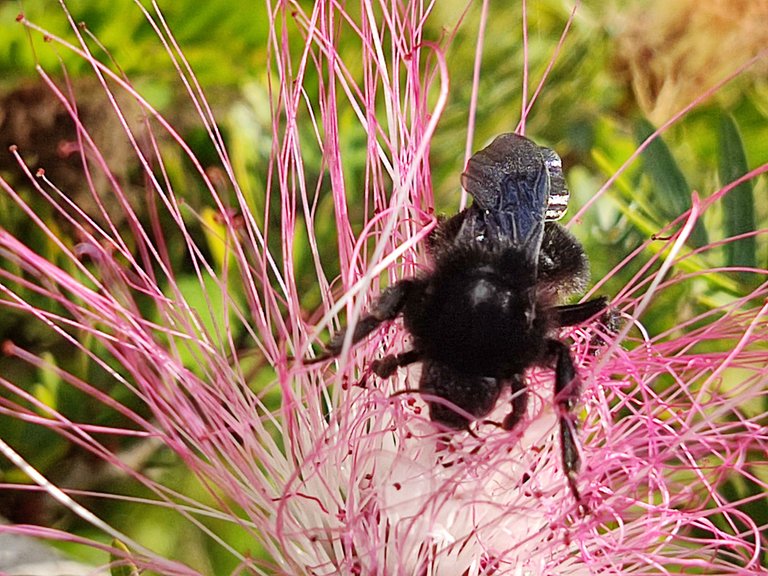
Sometimes it is difficult to determine at a glance whether this bumblebee is male or female. However, existing literature indicates that females have a stinger, and this pic shows a blunt tail.
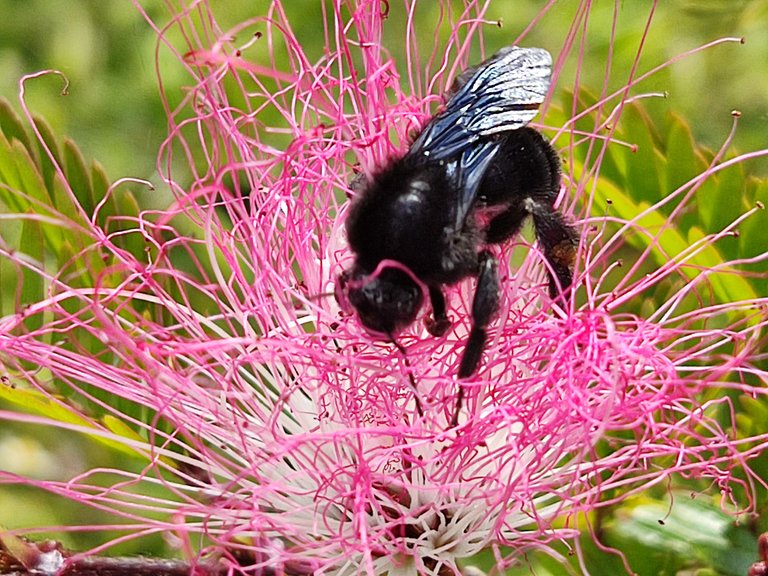
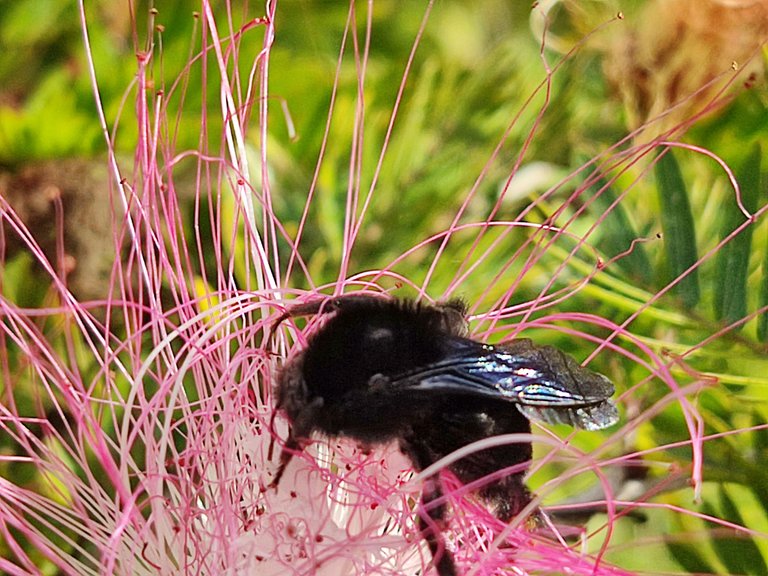

I thoroughly enjoyed taking these photographs. For me, it was a doubly gratifying experience since I could appreciate in detail these exotic flowers of Calliandra parvifolia and the same time, see this greedy bumblebee tasting as much nectar as possible.
Below you will find the technical data of the two protagonists of these beautiful pics.
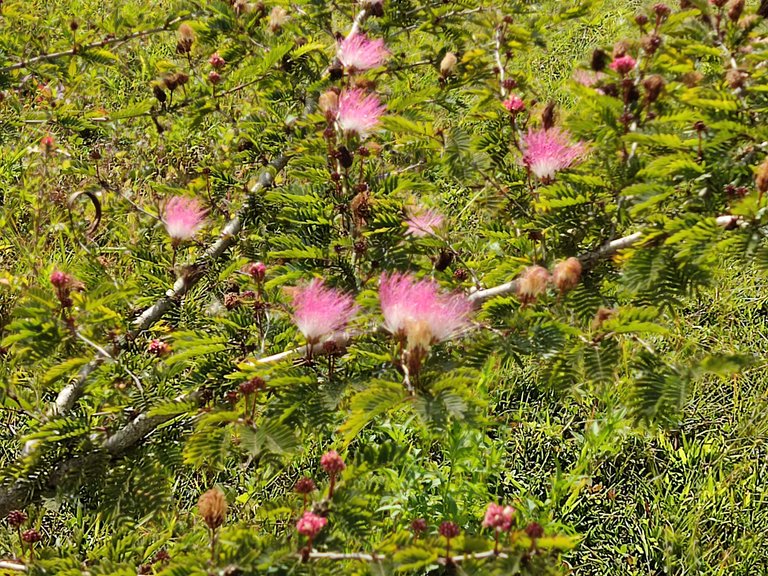
| Taxonomic Category | Rating |
|---|---|
| Kingdom | Plantae |
| Phylum | Magnoliophyta |
| Class | Magnoliopsida |
| Order | Fabales |
| Family | Fabaceae |
| Subfamily | Mimosoideae |
| Genus | Calliandra |
| Species | Calliandra parvifolia |
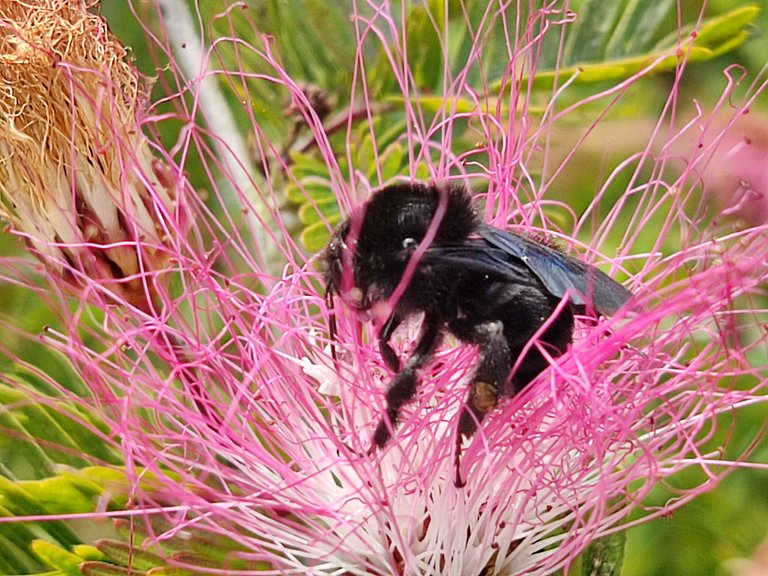
| Taxonomic Category | Rating |
|---|---|
| Kingdom | Animalia |
| Phylum | Arthropoda |
| Class | Insecta |
| Order | Hymenoptera |
| Family | Apidae |
| Subfamily | Xylocopinae |
| Genus | Xylocopa |
| Species | X. violacea |
References:
Calliandra parvifolia (Hook. & Arn.) Spreng.
Xylocopa violacea, el abejorro azúl
Abejorro azul de la madera Xylocopa violacea (Linnaeus, 1758)

All images are property of the author edited with Snapseed
(Camera cell phone: POCO X3 Pro, Xiaomi)
The author's original text in Spanish was translated into English using DeepL


I appreciate your work and your post has been manually curated by Botanic team @oscurity on behalf of Amazing Nature Community. Keep up the good work!
Thank you very much @hive-127788 @oscurity for supporting my work.
thanks for sharing
We appreciate your work and your post was manually curated by @none! from the DNA team!
Reach us on Discord to learn more about the project!
It is a pleasure to share these wonderful things that nature gives us. Thank you @dna.org @none for stopping by!
The rewards earned on this comment will go directly to the people( @chaodietas ) sharing the post on Twitter as long as they are registered with @poshtoken. Sign up at https://hiveposh.com.